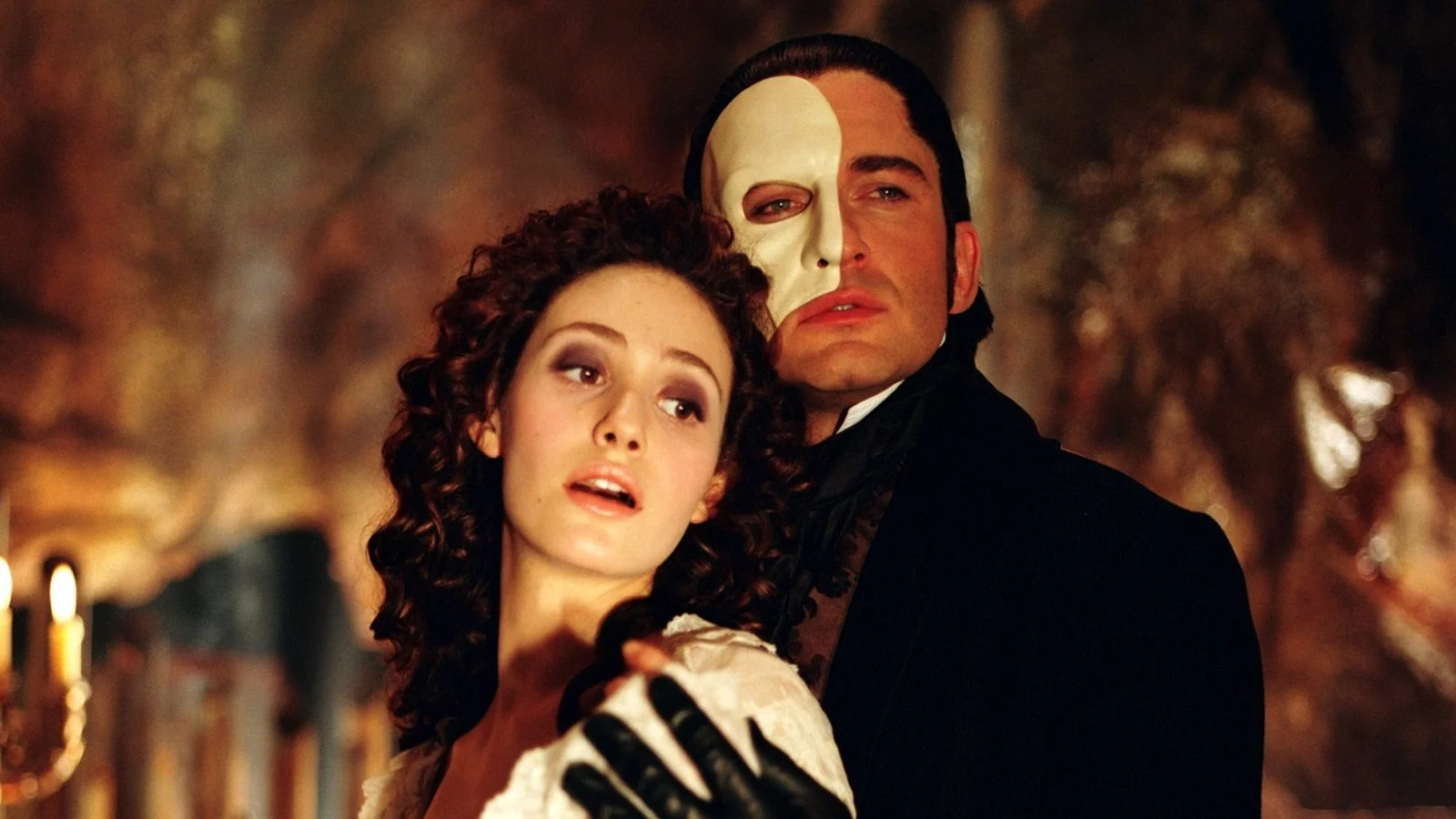Five Ways to Fix the 'Phantom of the Opera' Movie (Because We Deserved Better)
by Chris Peterson, OnStage Blog Founder
Let me be clear—I don’t hate the 2004 Phantom of the Opera movie. I just want more for it. For the source material. For the fans. For me, personally. Joel Schumacher’s glossy, romantic adaptation of Andrew Lloyd Webber’s most iconic musical is, at best, a beautiful mess. At worst? A missed opportunity with chandelier-sized potential. But here’s the thing: it can be fixed.
So if someone handed me the director’s chair, a time machine, and a more Phantom-appropriate budget, here are five changes I’d make to give this film the haunting grandeur it deserves. Because at the end of the day, Phantom isn’t just a musical—it’s a myth, a legend, and a masterclass in theatrical storytelling. And that deserves better than smudged eyeliner and auto-tune.
1. Cast actors who can actually sing the roles.
This one stings, because Emmy Rossum is trying her hardest. But listen—Christine Daaé is supposed to be an operatic prodigy. Not someone who sounds like she's being coached through her warm-ups. Rossum gives a delicate performance, but it lacks vocal authority. And then there's Gerard Butler, who is clearly a rock singer dropped into an opera house like someone accidentally walked into the wrong audition. The Phantom should be terrifying, seductive, and vocally commanding. Instead, he sounds like he's one high note away from pulling something. Broadway and West End were filled with men who could sing this in their sleep. We could’ve had Ramin. Or Hugh Panaro. Or literally any man who knows what “vocal placement” means.
Singing isn’t just about pitch—it’s storytelling. It’s character. And in a movie musical, it’s non-negotiable.
2. Tone down the softcore energy.
I get it—the Phantom is sexy. Or at least, the danger of him is. But Schumacher took that concept and ran full speed into Harlequin romance territory. Why does Music of the Night feel like a perfume commercial? Why does the camera swoop like it’s on a ride at Busch Gardens? Why is there so much licking?
It’s not that the Phantom can’t be alluring, but subtlety would’ve gone a long way here. The story is rooted in obsession, manipulation, and longing. But in this version, it’s like the Phantom’s main power is… shirtless brooding. Dial it back. Let the tension build. Give us the ache before the kiss. This isn’t Fifty Shades of Garnier Fructis.
3. Make it look like an actual opera house.
The Paris Opera House is a character in and of itself. It’s grand. It’s gilded. It’s haunted! So why does this movie feel like it was filmed in a wax museum version of it? Everything’s too clean, too polished, too obviously a set. The stage scenes feel like cutscenes from The Sims: Gothic Expansion Pack.
This should be a world that breathes mystery and history. Dusty curtains. Dim corridors. Candlelight and shadow. The 25th Anniversary stage production at Royal Albert Hall has more atmosphere—and it was mostly platforms and projections. The film had the budget. It just lacked the grime and magic.
We want it to feel like the Phantom could be watching from the rafters. Here, he’s probably just behind the fog machine.
4. Rewrite “Point of No Return” so it’s actually suspenseful.
This song should be a showstopper. Christine, realizing she’s singing with the Phantom himself in disguise? That should be chilling. But instead, it plays out like a high school talent show where no one told the audience what the stakes were. Butler’s vocals are doing their best Brandon Flowers cosplay, and the direction keeps undercutting the drama. The camera keeps cutting away, the tension dissolves, and by the time Raoul shows up with a sword, we’re more confused than captivated.
Let the moment breathe. Build the unease. Let Christine clock what’s happening before the mask comes off. Trust your audience to follow the emotional thread—don’t just dazzle them with lens flares and organ riffs.
This is supposed to be the emotional climax, not an MTV music video.
5. Actually make the Phantom scary again.
This Phantom is sad. And while that’s part of his story, he’s also a murderer, a stalker, and a genuine threat. In this movie, he’s more “emo ex-boyfriend” than “vengeful genius who lives in a lake under an opera house.” The fear factor is gone. His disfigurement is barely visible. His actions have no weight. He’s misunderstood, sure—but he's also dangerous. That complexity is what makes the character iconic.
We need a Phantom who commands the screen. One who can sing, yes, but also unsettle us. Someone who makes us believe Christine’s conflicted feelings are about more than just pity. Give us a Phantom who seduces us one minute and sends chills down our spine the next.
There’s a reason the story endures. Let him be the monster and the man.
Honorable mention: give Minnie Driver her own spin-off.
Carlotta is the only one who seems to know what movie she’s in, and Minnie Driver is absolutely feasting on it. She dials it all the way up and honestly? Good for her. I would watch a whole series about Carlotta’s backstage drama, petty rivalries, and diva tantrums. Let Minnie cook. Give her a glittering vanity, a lapdog, and a whole lot of aria-fueled chaos. I’d tune in weekly.
In the end, Phantom is a story that walks the line between beauty and darkness, love and obsession, illusion and reality. The 2004 movie had a chance to be a definitive version—but it blinked. Still, a few smart changes, a different approach to tone and casting, and a bit more trust in the source material, and we could’ve had something truly operatic.
Maybe one day we’ll get the gritty, haunting, sung-properly version we deserve.
Until then… the music of the night plays on. Just slightly off-key.
